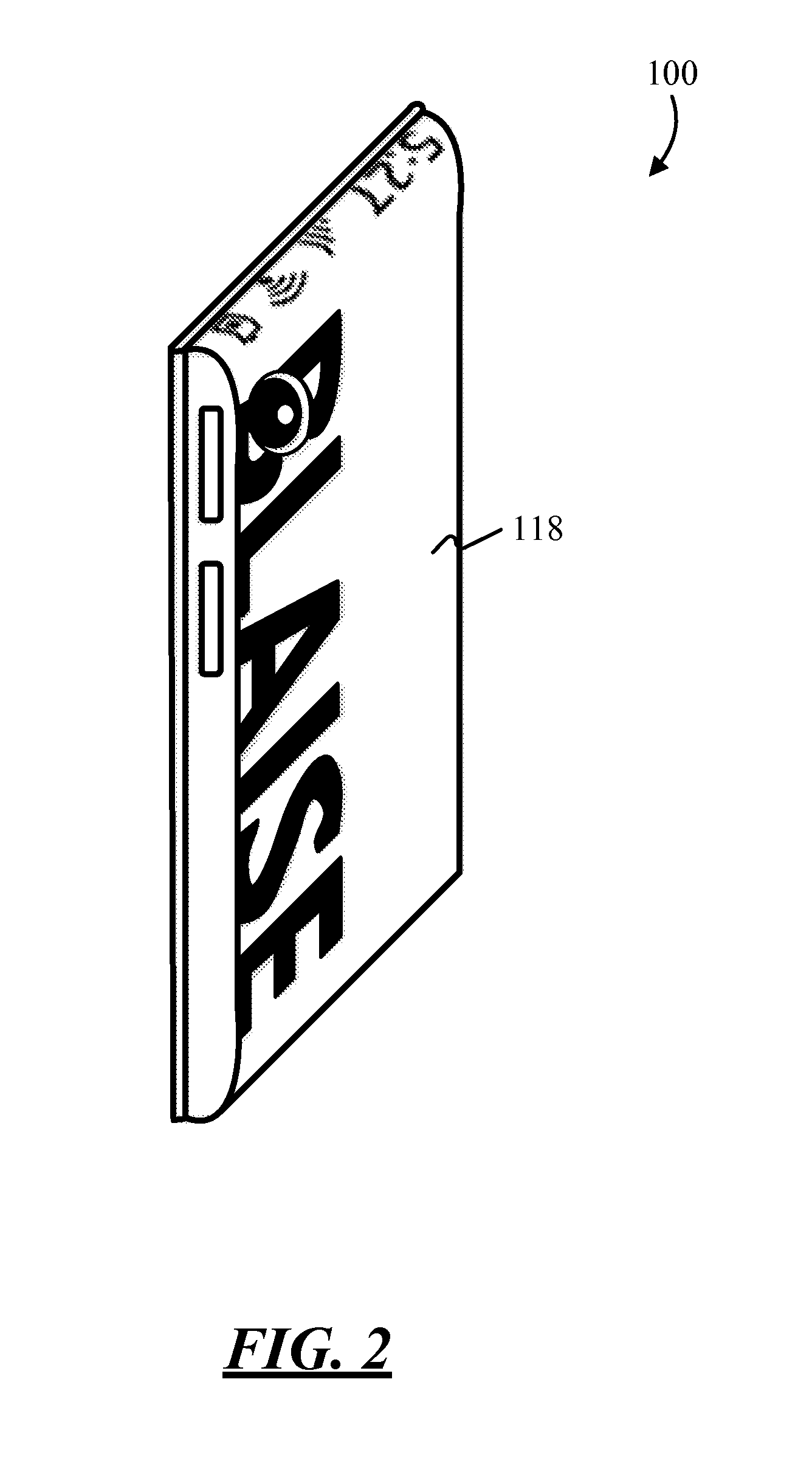Use of low-power display on device
a low-power display and display technology, applied in static indicating devices, high-level techniques, instruments, etc., can solve the problems of limited display real estate, large surface area on the device, display real estate, etc., to reduce the power load on the device, free real estate, and compelling user experien
- Summary
- Abstract
- Description
- Claims
- Application Information
AI Technical Summary
Benefits of technology
Problems solved by technology
Method used
Image
Examples
Embodiment Construction
[0014]As technology advances, mobile phones and other devices are being designed such that a display occupies an increasing proportion of the device's surface area. It was once common for a device to have a single display that took up, perhaps, one half the surface of one side of the device. Now, some devices have a display that occupies almost the entire surface of one side of the device, and some of these devices have more than one display. For example, some mobile phones or tablet computers have a touch screen that takes up a large proportion of a single side of the device, and that functions as the device's main input and output device. Some devices, such as “flip” or “slide out” phones (or even devices with no “flip” or “slide out” feature) have plural displays.
[0015]When devices have plural displays, the displays are typically used in different ways. For example, a flip phone may have a large display that acts as the main display for the phone, and a small auxiliary display on...
PUM
 Login to View More
Login to View More Abstract
Description
Claims
Application Information
 Login to View More
Login to View More - R&D
- Intellectual Property
- Life Sciences
- Materials
- Tech Scout
- Unparalleled Data Quality
- Higher Quality Content
- 60% Fewer Hallucinations
Browse by: Latest US Patents, China's latest patents, Technical Efficacy Thesaurus, Application Domain, Technology Topic, Popular Technical Reports.
© 2025 PatSnap. All rights reserved.Legal|Privacy policy|Modern Slavery Act Transparency Statement|Sitemap|About US| Contact US: help@patsnap.com



